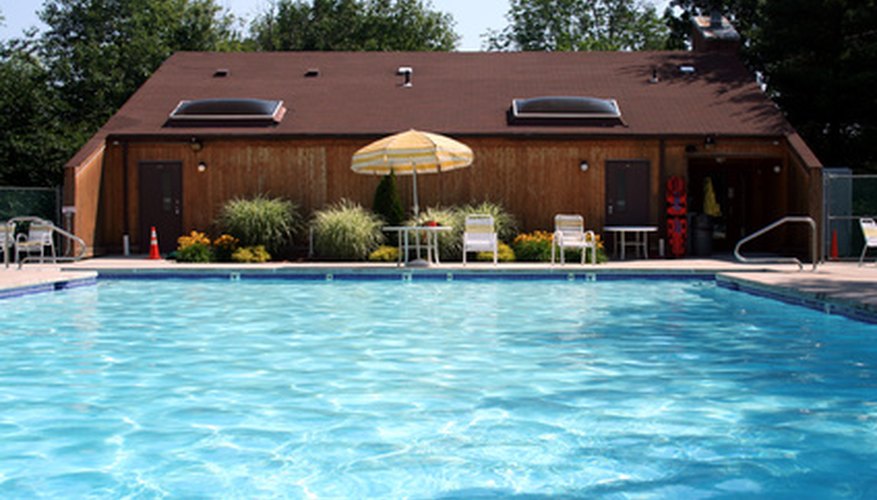The Consumer Product Safety Commission (CPSC) estimates that about 350 children under the age of five drown in swimming pools each year--many of them in someone's back yard. There are no national laws on the books regarding pool fence requirements, but some states and localities have adopted their own measures. The CPSC has drawn up model legislation that can be used by governments seeking to adopt or amend pool fencing legislation, and the Association of Pool and Spa Professionals says the CPSC guidelines are in keeping with its safety standards.
Barriers
The Consumer Product Safety Commission indicates that all residential pools and spas that can hold water over 24 inches deep should be surrounded by some type of barrier to prevent small children from gaining access to the water when there's no adult supervision. Fences or walls should be at least 48 inches above grade. When the fence is placed on a hard surface, the bottom should be no more than 4 inches above grade. If the fence is on a soft surface like grass, the bottom should be no more than 2 inches above grade. If the barrier is made out of a material like brick or rock, it's important that there be nothing protruding enough to provide an opportunity for someone to climb the barrier.
- The Consumer Product Safety Commission indicates that all residential pools and spas that can hold water over 24 inches deep should be surrounded by some type of barrier to prevent small children from gaining access to the water when there's no adult supervision.
- When the fence is placed on a hard surface, the bottom should be no more than 4 inches above grade.
Gates
The CPSC indicates that gates must meet the minimum fencing requirements and also be equipped with a locking device. Any gate used by pedestrians should open outward, away from the pool. The gate should be self-closing and self-latching. If the self-latching device is less than 54 inches from the gate's bottom, the release mechanism should be at least 3 inches below the top of the gate and on the pool side of the gate. There should be no openings in the gate or barrier greater than a half-inch within 18 inches of the release mechanism.
- The CPSC indicates that gates must meet the minimum fencing requirements and also be equipped with a locking device.
- If the self-latching device is less than 54 inches from the gate's bottom, the release mechanism should be at least 3 inches below the top of the gate and on the pool side of the gate.
Dwelling Walls
Sometimes, a house provides one side of the barrier around the pool. When that is the case, any door in the wall that can provide direct access to the pool should be equipped with an audible alarm system. The alarm should comply with Underwriters Laboratories (UL) standards and be set up with a manual means to deactivate the alarm, but not for more than 15 seconds. The deactivation device should be no more than 54 inches from the floor or the door's threshold.
- Sometimes, a house provides one side of the barrier around the pool.
- When that is the case, any door in the wall that can provide direct access to the pool should be equipped with an audible alarm system.
